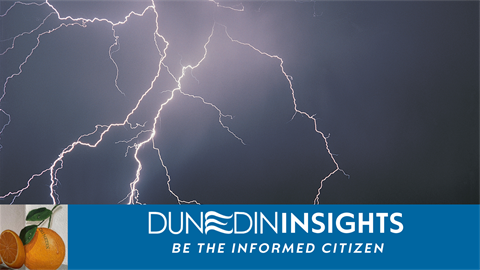Lightning Safety in Florida: What You Need to Know
Published on July 16, 2025

Each year in the United States, roughly 300 people are struck by lightning annually. About 30 are killed and many others suffer lifelong injuries. The good news is that most of these incidents are preventable. The following tips can help protect you and your family.
When Outdoors
Be Aware
Know the forecast before heading out. If thunderstorms are expected, consider postponing your plans. Watch for darkening skies or listen for distant thunder. That is your signal to seek shelter. Remember: “When thunder roars, go indoors!”
Seek Shelter Immediately
Safe locations include homes, offices, shopping centers, and hard-topped vehicles with the windows rolled up.
If Caught in the Open Without Shelter
-
Never lie flat on the ground. Instead, crouch in a ball-like position with your head tucked and hands over your ears. This reduces your height and contact with the ground.
-
Avoid sheltering under isolated trees.
-
Move away from ponds, lakes, and other bodies of water.
-
Stay clear of objects that conduct electricity, such as wire fences and power lines.
Separate from Others
If you are in a group, spread out. This lowers the risk of multiple injuries from a single lightning strike.
If You Are on Open Water
Return to shore immediately if possible. Boats with cabins offer some protection. If in a small, open boat without a cabin, drop anchor and get as low as possible.
Avoid High-Risk Areas
Stay away from open vehicles like convertibles, motorcycles, and golf carts. Avoid open structures such as gazebos, porches, dugouts, and stadiums. Leave open spaces like beaches, parks, golf courses, and swimming pools. Avoid tall structures like telephone poles and lone trees.
When Indoors
Avoid contact with water. Do not bathe, shower, or wash dishes because lightning can travel through a building’s plumbing. Avoid using electrical equipment and corded phones. Stay away from windows, doors, porches, and concrete walls or floors.
Pet Safety
Do not leave pets outside or tied to trees during a storm. Doghouses are not safe shelters. Bring pets indoors. Remove metal collars, leashes, or harnesses. While metal does not attract lightning, it conducts electricity and can worsen injuries if lightning strikes.
If Someone Is Struck by Lightning
Lightning victims do not carry an electrical charge and can be touched safely. Call 9-1-1 immediately. Move the victim to a safer location if necessary. Begin CPR if you are trained to do so. Use an Automated External Defibrillator (AED) if one is available. An AED is a portable device that checks the heart’s rhythm and, if necessary, delivers an electric shock to help restore a normal heartbeat. These devices are simple to use and can save lives.
Protect Your Home
To help prevent fires or damage caused by lightning, consider installing home lightning protection systems. The National Weather Service and your homeowners insurance provider offer helpful guidance on these systems.
References
Centers for Disease Control and Prevention (CDC): www.cdc.gov/disasters/lightning/safetytips.html
National Weather Service: www.weather.gov/safety/lightning-rods